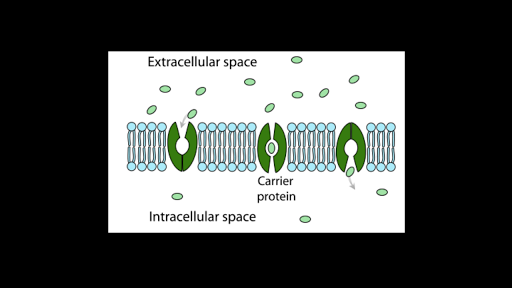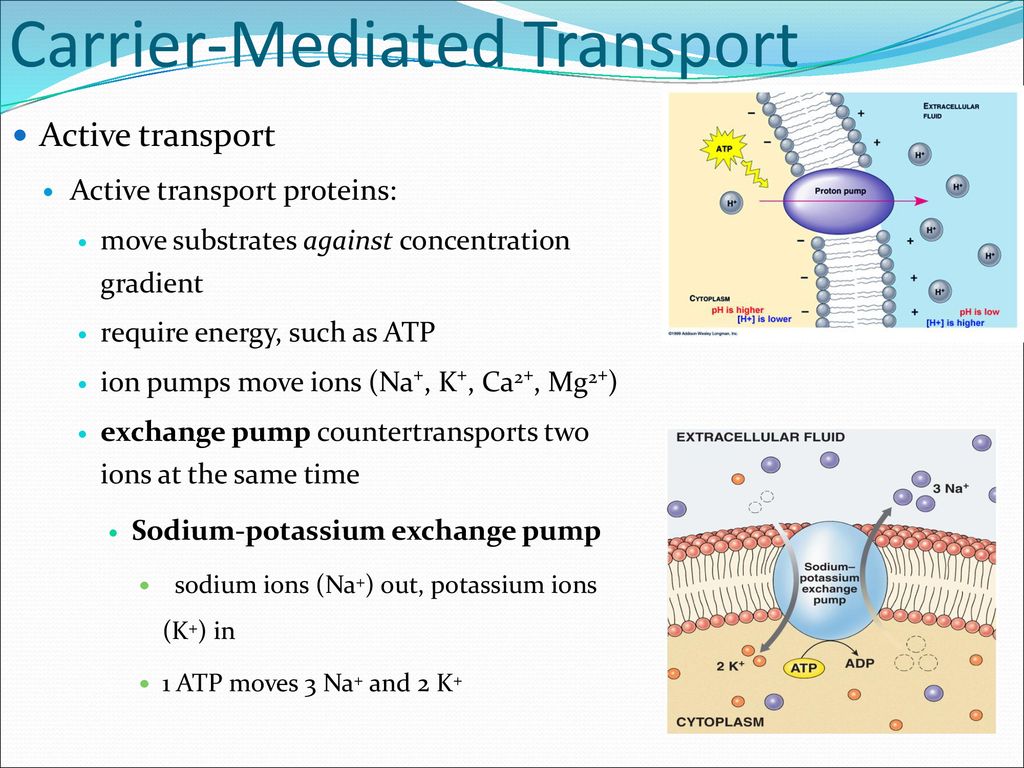Types of carrier mediated transport can have passive transport facilitated transport facilitated diffusion which does not require energy can also have active transport.
Carrier mediated transport that requires energy.
Carrier mediated transport that occurs against a concentration gradient and which therefore requires metabolic energy is called active transport.
Membrane proteins that aid in the passive transport of substances do so without the use of atp.
Active transport occurs only through the lipid layer of the cell membrane where the transported substance combines with a specific carrier protein.
It requires energy derived directly from the breakdown of adenosine triphosphate or another high energy phosphate compound creatine phosphate this leads to the conformational change in the carrier and it pumps the carried substance across the.
In dm glucose uptake by muscle and fat cells is impaired because the carriers for facilitated diffusion of glucose require insulin.
During active transport atp is required to move a substance across a membrane often with the help of protein carriers and usually against its concentration gradient.
If the process uses chemical energy such as adenosine triphosphate atp it is called primary active transport.
In order to sustain metabolism cells must take up glucose amino acids and other organic molecules from the extracellular environment.
In carrier mediated transport both sides doors of carrier are not open at same time.
For all of the transport methods described above the cell expends no energy.
Secondary active transport involves the use of an electrochemical.
Active transport is the movement of solutes against the electrochemical gradient which requires energy.
Carrier mediated stereospecificity saturation and competition glucose transport in the muscle and fat cells is downhill is carrier mediated and inhibited by sugars such as galactose.
Carrier mediated transport is an energy dependent pathway generally used by small hydrophilic molecules.
Passive transport is a movement of ions and other atomic or molecular substances across cell membranes without need of energy input.
The kinetics of carrier transport are similar to the kinetics of enzyme mediated chemical reactions.
This is usually to accumulate high concentrations of molecules that a cell needs such as glucose or amino acids.
There are specific receptors on the membrane of carriers that recognize the target molecules and transport them across the cell.
Unlike active transport it does not require an input of cellular energy because it is instead driven by the tendency of the system to grow in entropy the rate of passive transport depends on the permeability of the cell membrane which in turn depends on the.
Protein carrier mediated transport against a gradient requires energy.



























